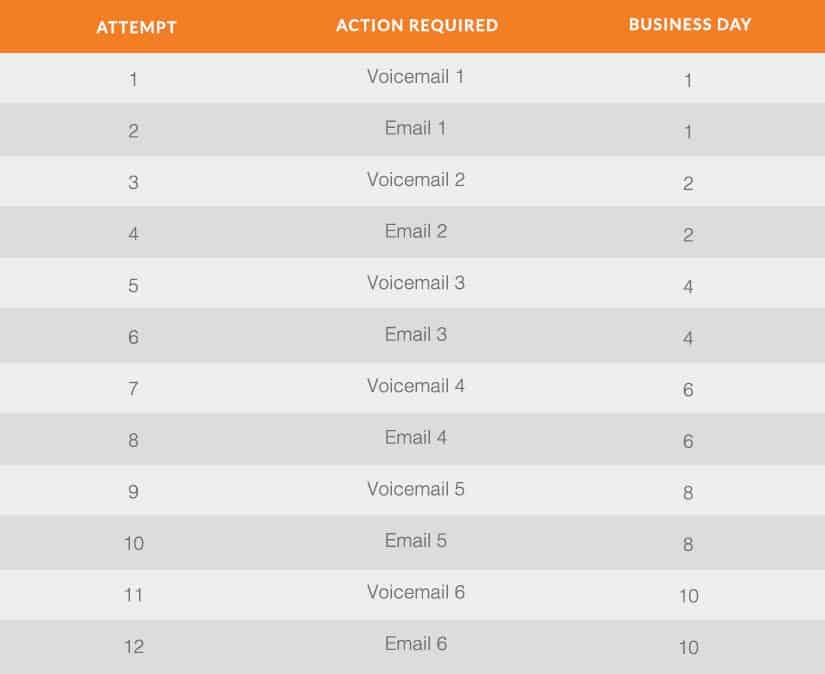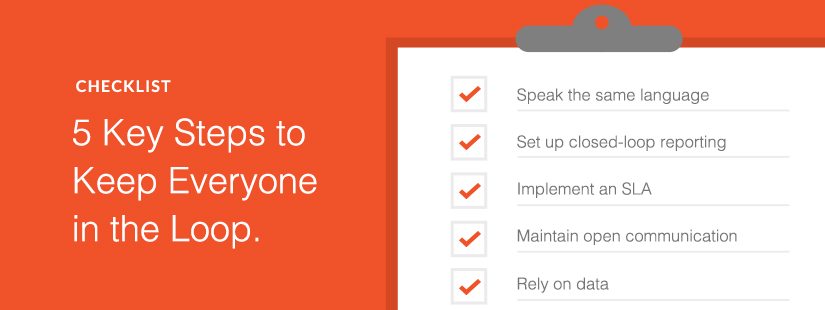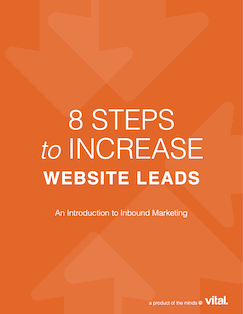Now that inbound has taken the marketing world by storm, there is considerable discussion about the need for companies to align their sales and marketing teams — and to make sure the sales team is guided by a well-documented, repeatable process designed to yield maximum revenue.
You’ve probably heard this referred to as “smarketing.”
In just a few short years since HubSpot coined the term, smarketing has evolved from “an aspirational idea” to “a necessary reality,” according to Entrepreneur.com.
And yet for many companies — even those that have embraced inbound marketing strategies and the need to align sales and marketing to achieve shared revenue goals — truly effective smarketing remains largely aspirational.
Why?
Sure, there’s been friction between sales and marketing over the years. But now that marketing has an unprecedented ability to turbocharge the process of generating new leads for sales, there should be a bit more harmony, right?
And yet, we’ve all read about — or perhaps even experienced first hand — this all-too-common scenario:
- Sales blames marketing for leads it claims are subpar.
- Marketing claims the leads are solid and blames sales for not working them properly.
It’s a major problem. Let’s talk about how to fix it. We’re going to be taking a closer look at the sales process. But first, some background.
Craft a Sales and Marketing Agreement
Companies that are making the commitment to use inbound marketing to grow their business must not only talk the talk about aligning sales and marketing, they must craft an internal protocol (usually called a Service Level Agreement or SLA) between sales marketing teams that clearly spells out how they will walk the walk, together.
Creating an SLA is a foundational element of an optimized inbound marketing program. However, according to HubSpot’s annual “State of Inbound” report, only 25–50% of organizations actually have one.
Talk about a missed opportunity! HubSpot’s research shows that companies whose marketing and sales departments are well-aligned see 20% annual revenue growth, while those that don’t have an SLA see a 4% decline.
With so much revenue on the line, there’s no shortage of reporting on why it’s important to craft and implement a successful SLA. And HubSpot is among those offering a free Service Level Agreement template.
According to sales performance analytics specialist InsightSquared, “An SLA is a contract between (sales and marketing) departments that aligns goals and outlines agreed-upon expectations. Instead of constantly battling over leads, an SLA holds both teams accountable to specific, measurable goals.”
To sum things up, a well-crafted SLA will align sales and marketing using mutually agreed upon definitions, commitments, procedures and metrics; as well as vigilant documentation, transparency and robust communication.
Simple right?
Just kidding. Crafting a winning SLA is actually:
- Quite challenging, yet
- Eminently doable, and
- Well worth the effort
Working together, the sales and marketing departments construct a mutual agreement that documents:
- What constitutes a marketing qualified lead (MQL)
- How many MQLs marketing will generate each month
- How marketing will hand off qualified leads to sales
- How sales will handle the lead from there (quick response is considered essential)
Basically, marketing makes a commitment to sales regarding the quantity and quality of leads that are needed to help sales meet their company revenue goals (“we promise to give you lots of great, qualified leads!”), while sales agrees to protocols regarding timely, high-quality follow up and detailed documentation (“we promise we’ll contact these awesome leads immediately, with verve and élan!”).
Transparency and ongoing communication is essential to this process, and is often augmented by using shared databases and automated systems that allow both sides to track (on customizable “dashboards”) their progress toward those shared goals in real time.
For Best Results, Craft a Lead Disposition Process
OK, so now the leads are rolling in. Sales and marketing are more closely aligned than ever before. What if the company is still falling short of reaching revenue goals? Let’s assume, for the purpose of this discussion, that marketing is meeting its commitment to deliver X number of quality leads, etc.
Successful industry practitioners have learned that for the system to work at maximum effectiveness it is imperative that sales adhere to a carefully crafted “lead disposition” process designed to enforce your company’s agreed-upon smarketing best practices and ensure consistency across the sales force.
The lead disposition process may include:
- Detailed, repeatable protocols (as well as tools such as email and voicemail templates) for making contact with qualified leads
- Coordination with marketing to better understand a particular campaign or product offer and how it might help solve a problem for a potential customer
- Total commitment by sales to document every aspect of the process
“The idea is to apply a consistent set of activities that respond to the prospect’s inquiry or behavior without overwhelming them,” according to blogger/author Matt Heinz, president of Washington-based Heinz Marketing. “An effective (lead) disposition process either reaches the prospect for qualifying, disqualifies them as an inappropriate prospect, or hands them back to marketing for ongoing nurturing until they’re both qualified and ready to buy.”
This system also enables sales and marketing to more closely coordinate such key tasks as the ongoing development of buyer personas — basically to share any and all information that helps one or both departments achieve those shared goals.
Measure Your Lead-to-Quote Ratio
It is also very important to closely track the percentage of your leads that turn into quotes. This will help you measure both:
- The quality of each lead, and
- The quality of the sales process
This can be done most effectively by modifying your sales process with some (potentially counter-intuitive) addition by subtraction.
A missed opportunity for many companies is that they provide direct emails and phone numbers of sales reps on their website. This can make incoming leads- and how sales is responding to them- much harder to track.
By replacing the sales rep contact info with an easy-to-use “Find A Rep” form, all incoming leads are automatically entered into the CRM (customer relationship management) system. If Salesforce is your CRM of choice, a Salesforce consulting partner can walk you through all of your custom form-generation and lead automation needs.
In a recent case study, we explained how, in addition to adding closed-loop reporting to your lead tracking process, this system can also automatically boost another critical metric- your company’s lead response time.
Leads Should NOT Go Directly to Sales
Are you sending all your leads directly to a salesperson? You shouldn’t be.
Many companies are following the advice of Aaron Ross, founder of Predictable Revenue Inc. and author of the best-selling book (you guessed it) “Predictable Revenue,” who recommends establishing an intermediate role in the sales hierarchy — a sales staffer who is dedicated to lead qualification, called the Market Response Representative (MRR).
The job of the MRR is to qualify leads. The MRR decides which leads get sent off to sales, and which leads require additional nurturing. The job involves following email and voicemail contact protocols to make that initial connection with leads to find out if they are ready to talk business, then deliver only the sales-ready leads to a salesperson to close.
By only sending the hot leads to a salesperson, this lead qualification ensures that sales only works the most promising leads, instead of wasting time on all the leads. Companies who employ a Market Response Representative can dramatically improve their lead-to-quote ratio.
Keep Everyone In The “Loop”
Smarketing also relies on a process called closed-loop reporting, which completes the feedback loop between marketing and sales.
Once in place, an automated closed-loop reporting system gives marketing more information on the status of leads and vital data on which marketing programs are working and which aren’t, while helping sales prioritize leads and increase close rates.
Closed-loop reporting is regarded as so essential to the process of aligning your sales and marketing departments that HubSpot, in its Inbound Certification class entitled “The Power of Smarketing” lists it as one of the five key steps for creating an unstoppable smarketing juggernaut:
Closed-loop reporting “connects leads/prospects to the campaigns that created them, allowing you to credit leads to their original sources and judge your campaigns’ impact on ROI. This means that you’ll be able to tell where all of your best and worst leads are coming from, giving you the insight you need to prioritize the outlets and channels that will have the biggest impact on your bottom line,” according to marketing automation specialist Pardot, which offers this graphic to help explain how it works:
Closing Thoughts On Lead Qualification
Hopefully, your inbound marketing machine is running smoothly and you’re generating lots of leads, meaning lots of potential customers for sales to reach out to. But if you rely on your top sales reps to handle all these leads, their efforts will be diluted from what is obviously their most important role — closing.
To recap, for your inbound marketing to achieve optimal results, be sure to align your sales and marketing teams with a Service Level Agreement (SLA), implement closed-loop reporting and consider dedicating an inside sales staffer to “lead qualification,” thus freeing your top closers to focus on closing.
If you have additional tips about effective smarketing, share them in the comments section below! And be sure to drop us a line if you want to talk further about inbound marketing strategy.








